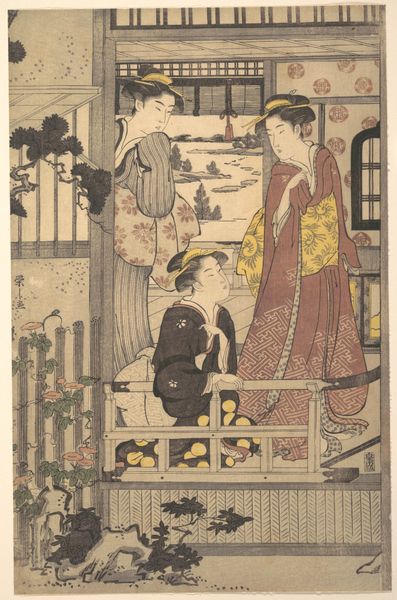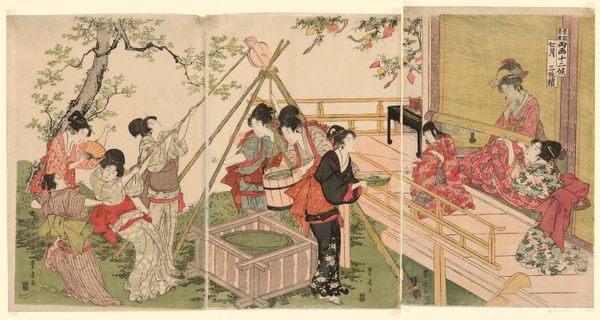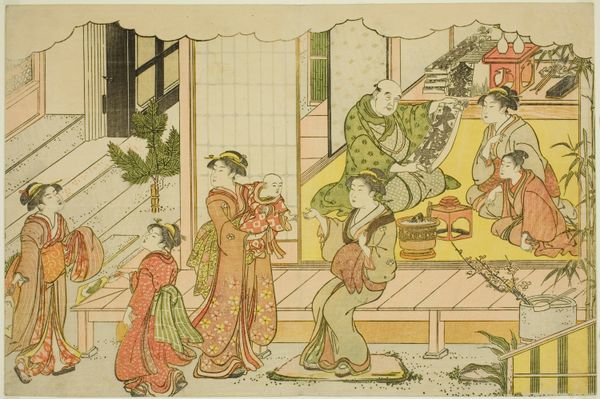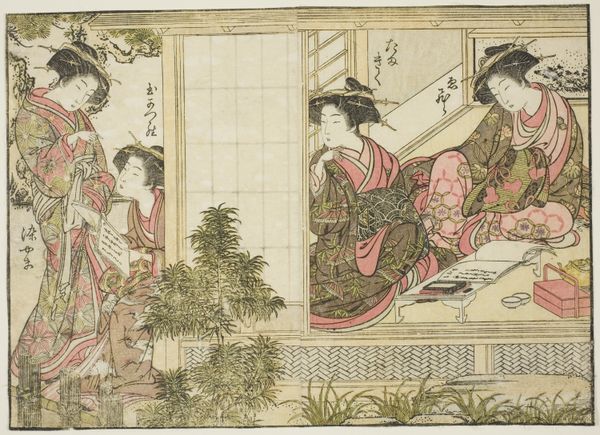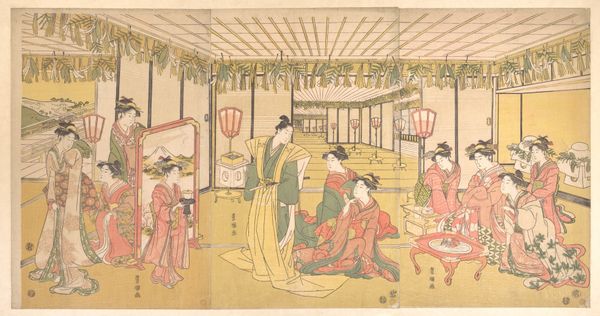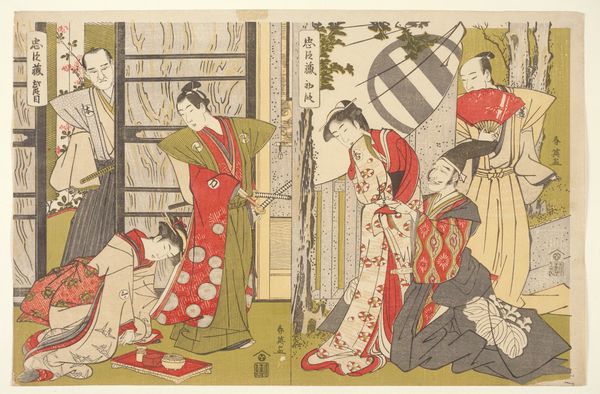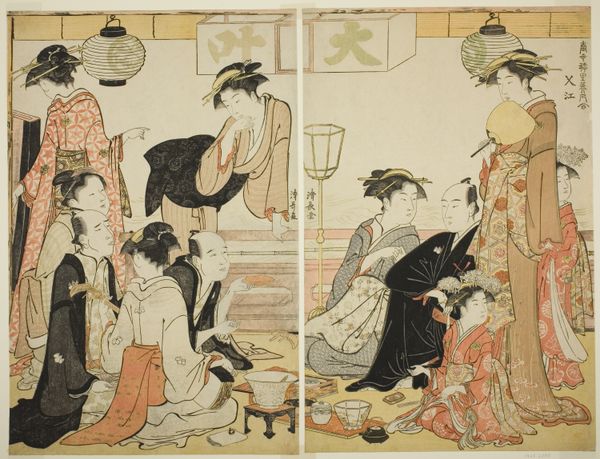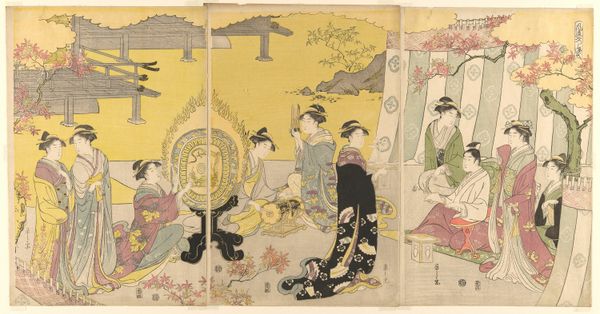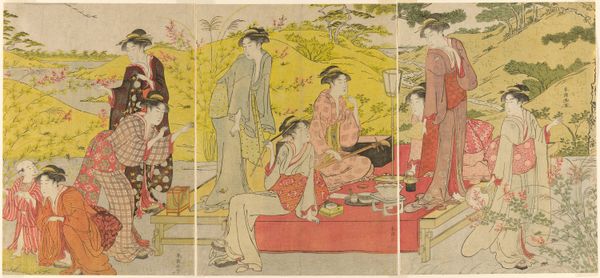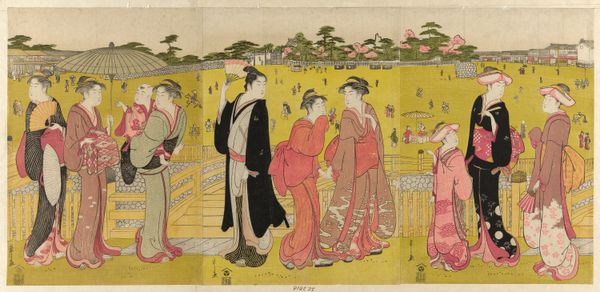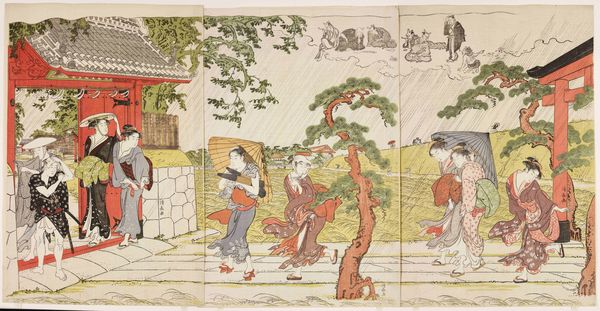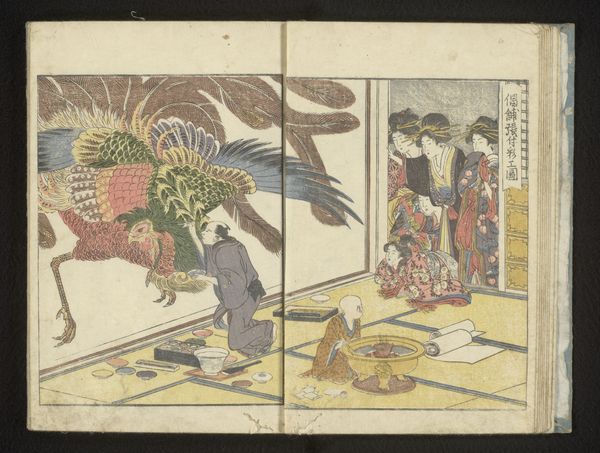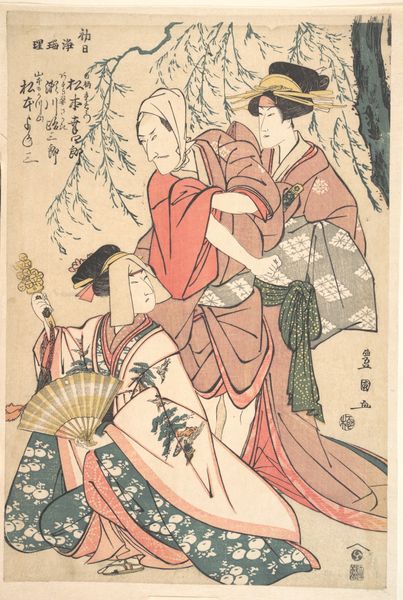
Tang Furen, from the series Twenty-four Paragons of Filial Piety 1830 - 1850
0:00
0:00
print, etching, woodblock-print
#
narrative-art
# print
#
etching
#
asian-art
#
ukiyo-e
#
woodblock-print
#
genre-painting
Dimensions: Horizontal ōban; Image: 8 7/8 in. × 14 in. (22.5 × 35.6 cm)
Copyright: Public Domain
Curator: Kuniyoshi's woodblock print, "Tang Furen, from the series Twenty-four Paragons of Filial Piety," created between 1830 and 1850, invites us to reflect on representations of virtue in 19th-century Japan. Editor: Virtue, huh? My first thought seeing this…it’s like two scenes happening at once. Almost like looking into someone’s memory, all pastel shades and suggestive meanings. Curator: Exactly. Kuniyoshi is employing the Ukiyo-e style to comment on filial piety, using its aesthetic conventions to embed a potent social message. Consider the figures—they represent an ideal of self-sacrifice within patriarchal structures, common in Confucian ethics. Editor: Okay, yes, I get that the woman feeding her family while selling stuff from her own house is sacrificing… but there's an undeniable emotional complexity there. I wonder what that does to modern viewers who engage with these ideas of piety. Are we meant to idealize or critique the act? Curator: A critical engagement is vital. Looking through a feminist lens, we can unpack how the mother’s role is defined through domesticity and duty. Her identity is nearly erased in favor of her service. We are meant to acknowledge, perhaps question, this expectation. Editor: I mean, sure, these old stories... They carry so much weight, even if you didn't grow up steeped in the traditions. Is the beauty of it just an aesthetic veil? Curator: The woodblock's artistry—the lines, the composition—does initially draw us in. But beyond that is the intricate dance between societal expectation, duty, and, dare I say, a veiled critique subtly woven into the very fabric of this beautiful image. It begs to be analyzed. Editor: Analyzed... Exactly. Because beneath the smooth surface, these images whisper a reminder of how narratives have the power to form entire worlds—to bind, liberate, inspire…or simply leave us wonderfully, uncomfortably changed. Curator: Indeed. We're left with echoes of those stories resonating in today’s conversations about gender roles and familial obligations, providing both the groundwork and framework for future discussions.
Comments
No comments
Be the first to comment and join the conversation on the ultimate creative platform.
